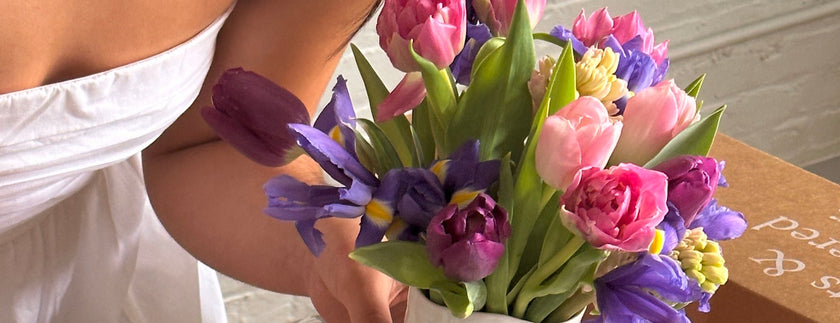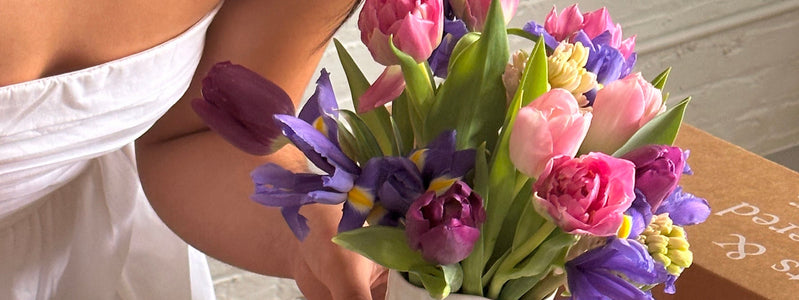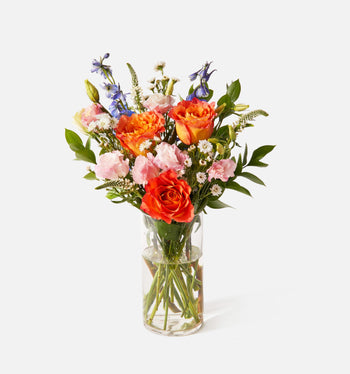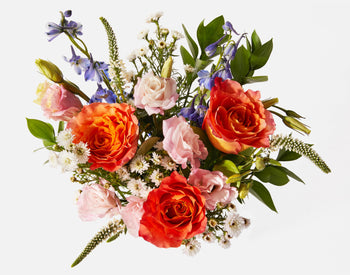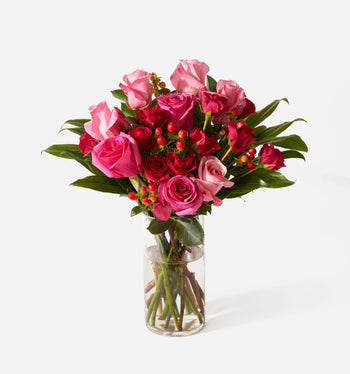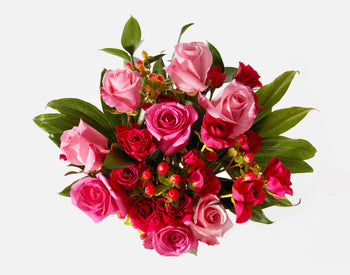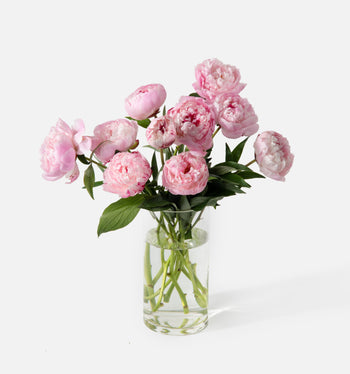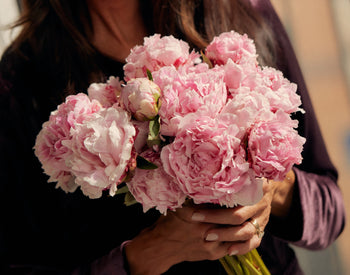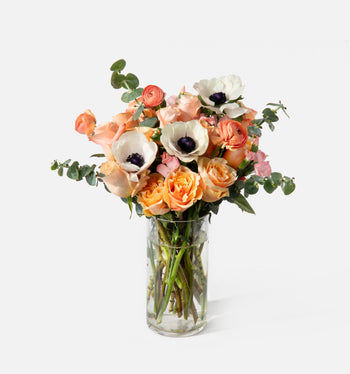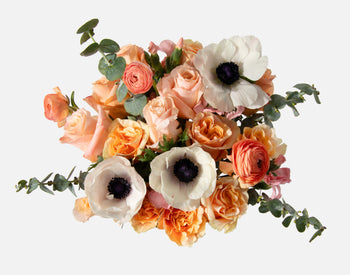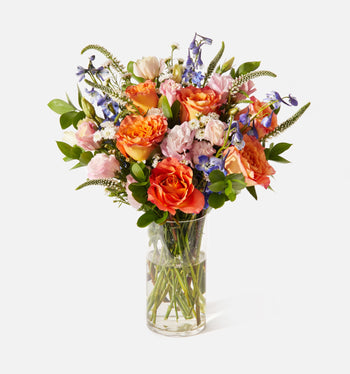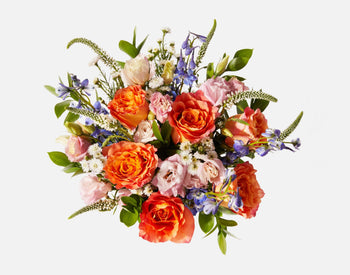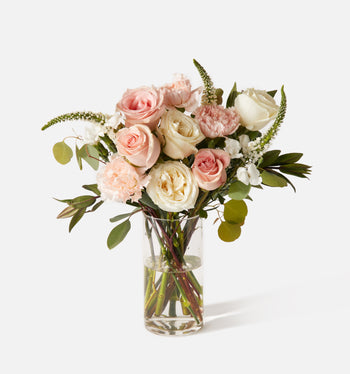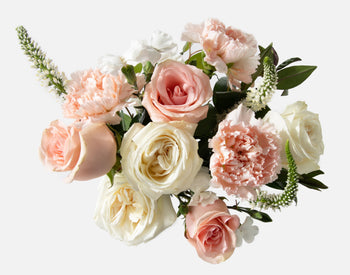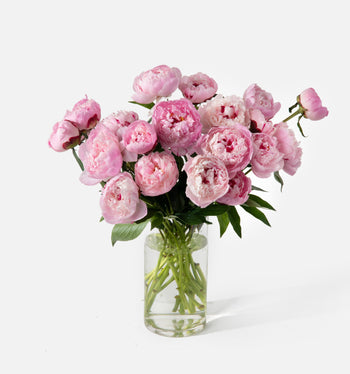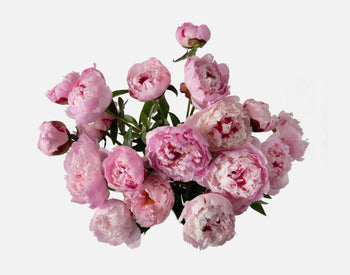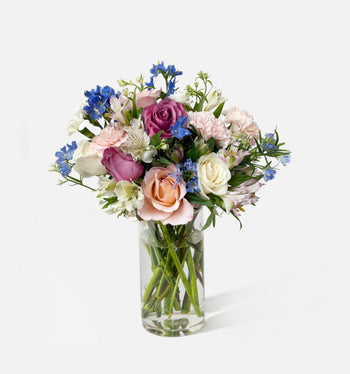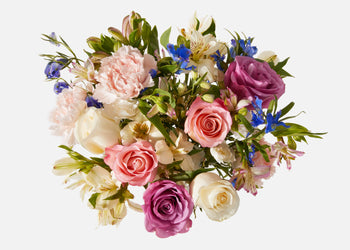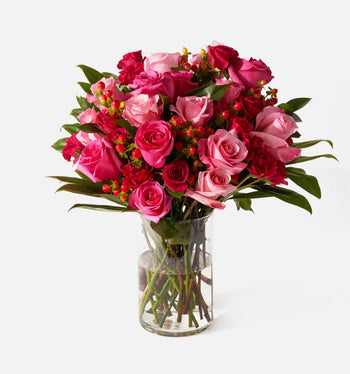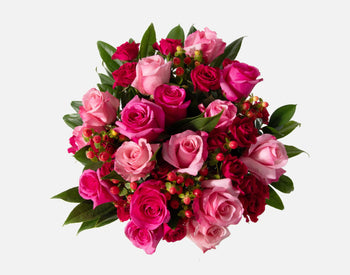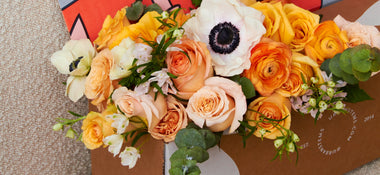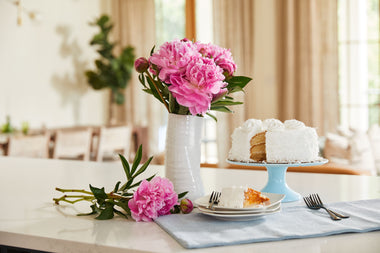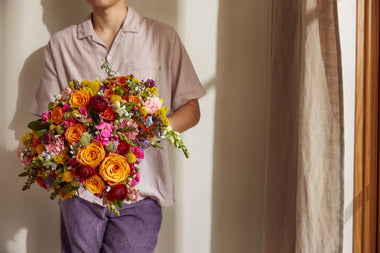The humble tulip is among the world’s most beautiful flowers. It’s the quintessential springtime bloom, offering a cheery disposition that alone makes it worthy of a place in any home. Add a tulip bouquet to any space, and it will transform the room right away. Light and uplifting, tulips are symbolic of many different emotions — which makes them especially well suited to give for a number of reasons and occasions.
Of course, the tulip is versatile enough to give (or buy for yourself) just because. You certainly don’t need a good reason to brighten up your home and infuse your space with a dose of instant good cheer. The same applies if you just want to make someone’s day more special. Tulips aren’t strictly associated with any singular meaning, making them a great option when you want to bring a smile to someone’s face. Here’s some information that may help you decide which tulip color is best for a special moment.
The Meaning of Tulip Flower Colors
- The History of the Tulip
- The Meaning of Tulips
- Tulip Color Meanings
- Yellow
- White
- Pink
- Red
- Purple
- Orange
The tulip’s history is rich and vast. Legend has it that the Ottomans were especially fond of the tulip for its obvious beauty. The flower flourished in the lavish gardens that became hallmarks of wealth, stability, and power on the lands where the Ottomans reigned throughout the 15th century.
Throughout the Middle East and even in parts of Austria and Spain, the Ottoman Empire prospered in immense ways. The gardens were evidence of that growth, as they were rife with a bevy of brilliant blossoms ranging from violets and Persian lilacs to roses and tulips. In fact, the tulip was considered something of a good luck symbol at the time — so much so that it was used far more prolifically in everyday life than the other flowers that populated the gardens.
For example, tailors would embroider the tulip on clothing that warriors could wear under their suits of armor while at war. There’s even a legendary tale of a bloody battle that took place between the Serbs and the Turks during the 14th century. The field, splattered with red blood, was likened to a field full of tulips. The tulip, then, played a prominent role in culture, appearing in everything from poetry to home décor to apparel.
In the 16th century, when Sultan Suleiman the Magnificent ruled, the tulip took on even greater meaning due to his appreciation for the flower. He didn’t just enjoy them but revered them. His subjects were to provide him with tulips on a regular basis, and his clothing typically featured rich tulip embroidery.
So enamored was Sultan Suleiman with tulips that he ordered a professional staff to tend to a lush garden called the Abode of Bliss. Here, tulips also played a prominent role in conveying an ambiance of peace, elegance, and natural beauty.
During the reign of Sultan Ahmet III in the 18th century, the flower had earned such a place in Turkish culture that a historian lent the period the moniker “The Tulip Era.” Gardeners throughout the region put all their energy into cultivating the flowers in various colors and often gave their gardens unique names that reflected the styles of their tulips.
Such a lavish history was a significant foreshadowing of what was to come for the beautiful flower. In its many colors, the tulip was the ultimate reflection of joy and celebration. Though it was a symbol of living well and wealth in centuries past, its popularity in the modern world reflects its incredible versatility.
Tulips are often associated with different symbolisms and emotions. From a very general perspective, they are often linked to feelings of immense, perfect, genuine love. Unlike roses, which reflect passion and romance, tulips conjure up the love people in any relationship may share. Whether it’s the love between a mother and a child or the love between best friends, it’s easily celebrated with joyous tulips.
Tulips bloom early in the spring season, so they are also often associated with rebirth. That makes the tulip a wonderful surprise for someone who is experiencing a significant life change, be it the birth of a baby, a transition to a new career, or a move to a new state or country. It’s also a thoughtful flower for someone who has conquered a seemingly insurmountable challenge.
While tulips have their own general meaning, different colors are actually associated with a wide range of meanings. If you’d like to give a tulip arrangement to someone, you can make your selection based on the message you’d like to convey.
Yellow
Once upon a time, yellow tulips were symbolic of “hopeless” love. In fact, they were often linked to jealousy. Today, though, the flower has taken on a newer, more positive meaning. Perhaps in an ode to the naturally sunny color, the yellow tulip is now a standout symbol of joy, happiness, hope, and good tidings. Legend has it that old Victorian novels featured yellow tulips in abundance, often used as an analogy for a person with a brilliant “sunshine smile.”
This is a big reason why yellow tulips are favored as the universal tulip of choice. They’re radiant, uplifting, and almost guaranteed to bring a smile to your recipient’s face. People who are superstitious even believe that planting this color in the garden will bring good fortune, prosperity, and joy to the family who resides in the home.
White
When you present someone with a white tulip, you’re either conveying your sorrow and condolences or expressing your regret over a mistake. Giving white tulips is a way of saying you’re sorry. They’re reflective of forgiveness, purity, holiness, and honor, so they are suitable to give for a variety of solemn, somber, or religious occasions.
For example, you could send them to a funeral or to the home of a family who is coping with the loss of a loved one. You could just as fittingly send them to a family celebrating a baptism or communion. Interestingly, in Holland, the white tulip is considered a powerful symbol of respect. It’s not unusual to give white tulips to someone as a mark of appreciation or even in honor of a wedding.
Pink
The pink tulip is another that’s incredibly versatile. It’s symbolic of happiness, love, joy, good luck, and well wishes. This makes it a well-rounded flower perfect for giving to a new love interest or on a first or second date as a sign of affection. It’s not reflective of passion like a red flower, but it still communicates a powerful message of love. This makes them just as appropriate to incorporate into an arrangement if you’re proposing to your significant other.
Pink tulips are also symbolic of attachment. As much as the flower is romantic, it’s also a nice reflection of a simple, uncomplicated, reliable love between a parent and child or between family members or best friends. It’s a suitable “just because” flower if you’d like to surprise someone with something to brighten their day.
Red
If love and romance are in the air, sending red tulips is a great way to show exactly how you feel. The red color is strongly associated with passion and unbridled love, making it a thoughtful option for a Valentine’s Day bouquet or an anniversary. You could give red tulips to a spouse, a fiancé, or a lifelong love simply to remind them just how much you love them.
A red tulip arrangement could also be a beautiful addition to a surprise proposal or a thoughtful and uplifting alternative to conventional red roses on a romantic occasion. You could have red tulips delivered to someone's doorstep if you want to send a message that you’re in love with them.
Purple
Purple tulips have an interesting history. The purple dye itself was very difficult for the average person to obtain — and because only royals could afford it, purple clothing was only worn by members of the royal family. By the 16th century, Queen Elizabeth had forbidden anyone who was not part of the royal family from wearing the color.
It’s no surprise, then, that the purple tulip is associated entirely with royalty. It’s far more versatile than it ever was, of course, and can add a little pop of interest to a mixed tulip bouquet. It’s often included in bridal arrangements and is commonly given between girlfriends to honor a “queen” who deserves the world.
Orange
The radiant orange tulip is undoubtedly the kind of pick-me-up flower that will bring a smile to anyone’s face. It’s often given as a mark of understanding, respect, and appreciation. While it’s commonly given to a significant other, it would not be inappropriate to give to someone as a gesture of gratitude. For example, giving orange tulips to a secretary or assistant is perfectly suitable.
Yet orange also has a deeper meaning. The tulip is symbolic of a profound connection between two people. While it undeniably conveys your thanks and appreciation, it also sends the message that you feel a strong bond with the person.
With such a wide variety of tulip colors available, it’s clear there is an option for every moment. Whether you’re sending flowers for a romantic occasion, just because, or to express your best wishes or gratitude, you can easily do so with the revered tulip.
